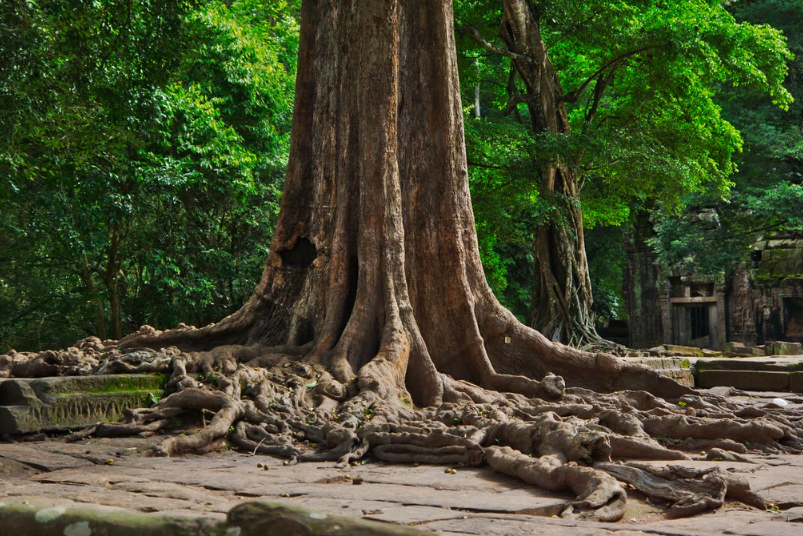There are a few different ways to tell if a tree needs to be cut down. The first sign for a tree removal option is obvious: it’s dead. A dead tree has succumbed to decay, disease, and insect pressure. Moreover, it is the wrong kind of tree for its surroundings. It will disrupt native wildlife and cause a structural deficiency that will eventually cause it to fall.
Invasive trees
There are many factors to consider when determining whether a plant is invasive. One consideration is the amount of damage it may cause to a property. For instance, a tree that grows into a building or vines that weigh down a line may be invasive.
If you have an invasive tree, it is best to remove it as soon as possible. This type of tree will damage the landscape and the surrounding area. It will also harm human health and the economy. If you decide to remove it, make sure you contact the city or county to get a permit.
A wood borer larva will eat the tree’s bark and leave holes. Insects known as defoliators eat the leaves of host plants. They also harm trees by out-competing native species. Invasive species should be removed to protect the ecosystem from the damage they cause.
Dead branches
It’s important to remove dead branches of a tree as they pose many risks to your tree. Dead branches expose your tree to harmful diseases and pests, and they also expose other healthy branches to damage. The removal of dead branches will allow your tree to rejuvenate and heal while ensuring that the nutrients it needs are directed to healthy branches. This will also reduce the risk of your tree being damaged by wind and other weather conditions.
When removing dead branches, make sure you use the proper equipment. This will help you get better cuts and remove dead branches from your tree in the right manner. A pruning saw with fine-toothed blades is ideal for cutting branches that are less than 2.5 inches thick. However, if you’re working with thicker branches, you’ll need a more sturdy saw. Otherwise, you risk damaging the trunk and making it susceptible to diseases. It is advisable to always seek expert help. Visit http://www.daytreeservices.co.uk.

Root rot
If you notice that a tree is leaning toward your home or is suffering from significant root damage, it might be time to call for a tree removal expert. A certified arborist can help you decide what is best for your tree’s health. A tree with extensive root rot can also be a safety hazard. This type of decay can cause a variety of mechanical problems inside the tree, such as impeding its ability to absorb nutrients.
Root rot is caused by too much moisture in the soil. It is especially common in the winter when the soil is moist. Trees need moisture to survive, but when the soil is too wet, it will trap the moisture around the roots and encourage rot. Fungi are naturally present in the soil, but they stay dormant until conditions change, but when trees are overwatered, they release spores that cause rotting.
Falling limbs
Falling limbs are a sign of a problem with a tree. They can pose a danger to homeowners and property owners, or they can simply be an inconvenience. In either case, you should address the problem before it becomes a problem. The first step is to assess the risk. A large, falling tree limb can cause extensive damage to a house. A small, falling branch can be less dangerous, but it still requires immediate attention.
Another sign of a tree removal needs is a dead or dying limb. A dead branch will have no buds and is likely to fall on the property. It’s important to determine whether a dead limb can be salvaged.
Invasive trees growing too close to sewer lines
If you’ve recently noticed that your drains are slower than normal, you may have invasive trees growing too close to your sewer lines. They can also lead to sinkholes on your property. When water drains slowly, it can clog sewer pipes and cause major damage to your home.
Some DIY solutions to tree root problems are available, but in most cases, you’ll need to call a professional plumber to do it. A plumber can use an endoscope to inspect your pipes and pinpoint where the roots are. A professional plumber can then remove them and fix the problem.
Trees must be removed if they are growing too close to sewer lines. This is because the roots of these trees require water and nutrients to grow properly. When the ground is dry, their roots will search for water, which can damage your sewer lines and joints. It is also important to know that some trees grow with more invasive root systems than others. Regardless of the type of tree, you’ll need to remove it if it’s growing too close to your sewer lines.
